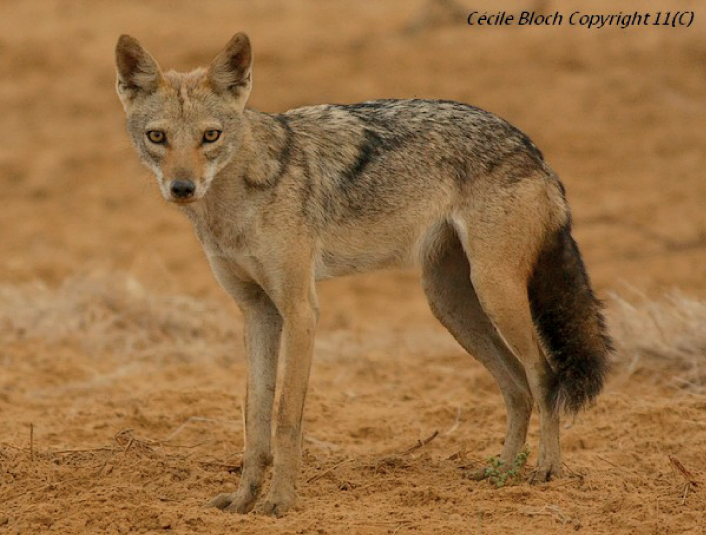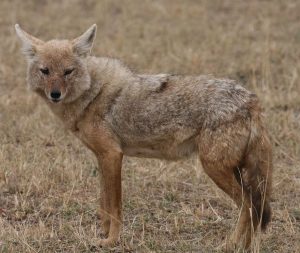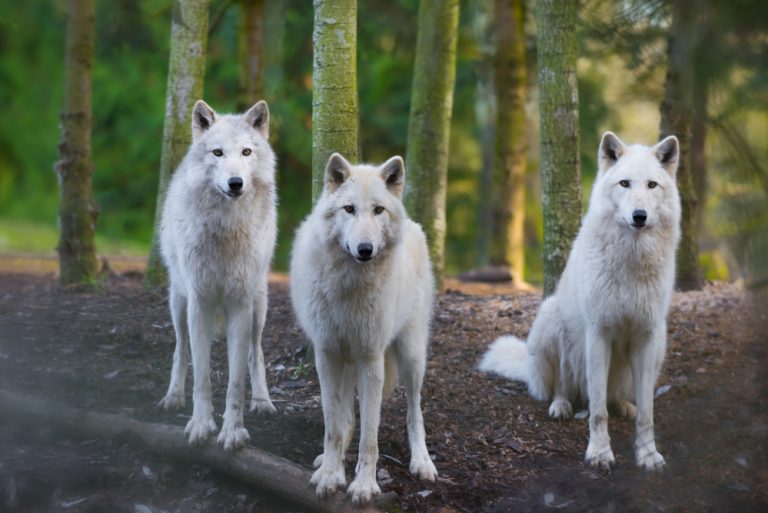Species Profile: The African Golden Wolf
Meet the African Golden Wolf, the latest ‘new’ wolf species discovered in the last 150 years.

The African Golden Wolf goes by many names depending on its geographic location. Its scientific name Canis Anthus translates to “bird dog.”
This animal was classified as a variant of the Eurasian jackal all these years until a recent study by the Smithsonian Conservation Biology Institute identified it as a true wolf. The mistake is understandable; it bears an almost indistinguishable similarity with the jackal. However, it’s slightly larger in size than the jackal.
Nevertheless, it’s still close enough to the jackal to successfully cross-breed with it.
It has different colors of fur ranging from yellowish, to reddish, and silver-gray with black speckled tail and shoulders. The eyes are amber-colored and the throat, abdomen and facial markings are typically white. Also, it has a more pointed muzzle, sharper robust teeth, and higher forehead than the Eurasian jackal.
This wolf species is native to north and northeastern Africa and is widely distributed in north-west and north-east Africa too.
The African Golden wolf is strictly monogamous and very territorial.
1) Scientific Name
Canis Anthus
2) Scientific Classification:
- Kingdom: Animalia
- Phylum: Chordata
- Class: Mammalia
- Order: Carnivora
- Family: Canidae
- Genus: Canis Anthus
3) Life Expectancy
The life expectancy for this animal has a wide range and depends mostly on the area and conditions where the animal resides. In the wild, life expectancy ranges from 6 to 8 years. In other settings, it can live for up to 10 to 18 years.
4) Average/Maximum Length and Height
Standing at about 40 cm in height, the African Golden Wolf is a smaller subspecies of the gray wolf and slightly larger than the African jackal. The size of the wolf does vary greatly between geographical locations as the East African wolves are the smallest of the African wolf species.
5) Average/Maximum Weight
The African Golden Wolf weighs about 15 to 33 pounds, or 7 to 15 kilograms.
6) Maximum Running Speed
About 64 km/h (40 m/h).
7) Interaction With/Danger To Humans
With the intrusion of human population in areas where the African wolf typically resides, the interaction between this animal and humans has not been positive.
As humans take over more and more of wolf lands to accommodate their growing population, the wolves face a dramatic decrease in land available for them to live and to hunt. Due to the effects on their habitat and the decrease in hunting options, wolves gather in human populated areas and try to get their food from livestock and other farm animals.
Humans then retaliate by killing any wolf on sight once found on their land.
8) Reproduction Details
The African Golden wolf is territorial and strictly monogamous. Consequently, they choose one mate that they remain with for life.
Once that mate has been identified, they commence with a mating ritual which lasts considerably longer than most other animals. First, they will identify their land and together they will mark their territory.
Thereafter, the ritual will commence which includes the female and male circling around each other, fighting briefly, then licking of each other’s genitals. Eventually, the female will lift her tail to reveal her genitals to the male. Once the sexual performance is complete, the male will offer the female his food and the female will respond to the male as a submissive.
Females will typically have a litter of about four to six pups. The pups are born between December and January. The first month, the pups rely solely on the parents for food and care. As they near two months, they will begin the weaning process and start eating solid foods. By six months of age, the pups are considered independent animals.
The African Golden wolf is strictly monogamous and will mate with one partner for life.
The African wolf keeps a simple organization within its family unit. Also, they will typically only grow the pack in size once they have their own pups. Larger familiar groupings are rare for the African Golden wolf as the only members within the pack are directly related to the mother and father.
Some of their previous offspring will stay within the family unit to “help” with the younger pups and other duties including guarding their territory.
9) Diet and Hunting Pattern Of The African Golden Wolf
These wolves rarely hunt for large game unless accompanied by another pack member. They thrive mainly on smaller prey, including fawns, birds, snakes, squirrels, lizards, and various rodents, etc. They also consume insects such as dung beetles and the larvae found inside of the dung.
In some areas, the African wolf is known to eat fruits and human food leftovers. Also, they will sometimes fight with other animals over the dead animal carcasses as well. And of course, when they find livestock, they will attack and eat it. As a result, there is always tremendous conflict with humans.
Depending on the subspecies, some of them go after lambs almost exclusively while others will feed on even larger animals like sheep, goats and cattle.
In the wild, they compete frequently with jackals, hyenas, and the Ethiopian wolf for prey though they usually just ignore each other.
10) Alternative Names
- Thoa
- Golden wolf
- African wolf.
Note that this animal has many different local names depending on the language spoken in that area.
11) Population and Conservation Status
The total population of the African wolf is unknown at this time as is its conservation status. However, it is important to note that the African Golden wolf plays an integral role in the ecosystem as a way to purify the habitat of trash as well as maintain the population of rodents and other creatures.
This species has not been evaluated by the IUCN.
12) Ancestry and History

It was wrongly classified as an African variant of the Eurasian golden jackal, and one subspecies (Canis anthus lupaster) was even classified as a gray wolf. However, a 2015 DNA study demonstrated clearly that it is in fact very distinct from both the golden jackal and the gray wolf, but more closely related to gray wolves and coyotes.
This wolf features prominently in some African cultures. For instance, in Maghreb and Egyptian folklore, it’s seen as a deceitful animal and its body parts are harvested for medicinal or ritualistic purposes.
On the other hand, to Senegal’s Serer religion, they view it as the first creature made by the god Roog.
Studies indicate that about 1.0 to 1.7 million years ago, the African wolf diverged from the wolf-coyote family forming its own subspecies.
Many experts say that this was due to parallel evolution as the jackals in the same demographic area underwent similar changes. Recently, studies also linked the African Golden wolf to the Himalayan wolf. As a matter of fact, there are six total African wolf subspecies which all fall under the gray wolf species:
- Algerian wolf
- Senegalese wolf
- Serengeti wolf
- Egyptian wolf
- Somali wolf
- Variegated wolf
Interestingly, each subspecies can be identified by its own distinct howling sound. Their vocalization is similar to that of domestic dogs: actually seven different sounds in total.
This wolf’s vocalizations include howls, barks, growls, whines and cackles. Such howls are used to repel intruders, attract family members, reinforce family bonds, and establish their territorial status.
The African Golden wolf has been hiding in plain sight all these years and was wrongly identified as a jackal variant.
13) Distribution and Habitat
This wolf species is native to north and northeastern Africa and is also widely distributed in north-west and north-east Africa. It ranges from Senegal to Egypt in the east, and it’s territory extends into Morocco, Algeria, and Libya into Northern Nigeria, Chad and Tanzania.
However, fossils dating back to the Pleistocene Epoch show that it was not always restricted to Africa. For example, researchers found its remains in the Levant and Saudi Arabia.
The African wolf can live in a variety of terrain including hillsides, coastal areas, farmlands, wooded areas, and even in the desert with limited water supply. In fact, they are so resilient that they even remain in areas with high human population despite the risks involved
As mentioned before, these wolves are very territorial. Because of that, they will immediately respond with aggression towards any creature trying to invade their land.






